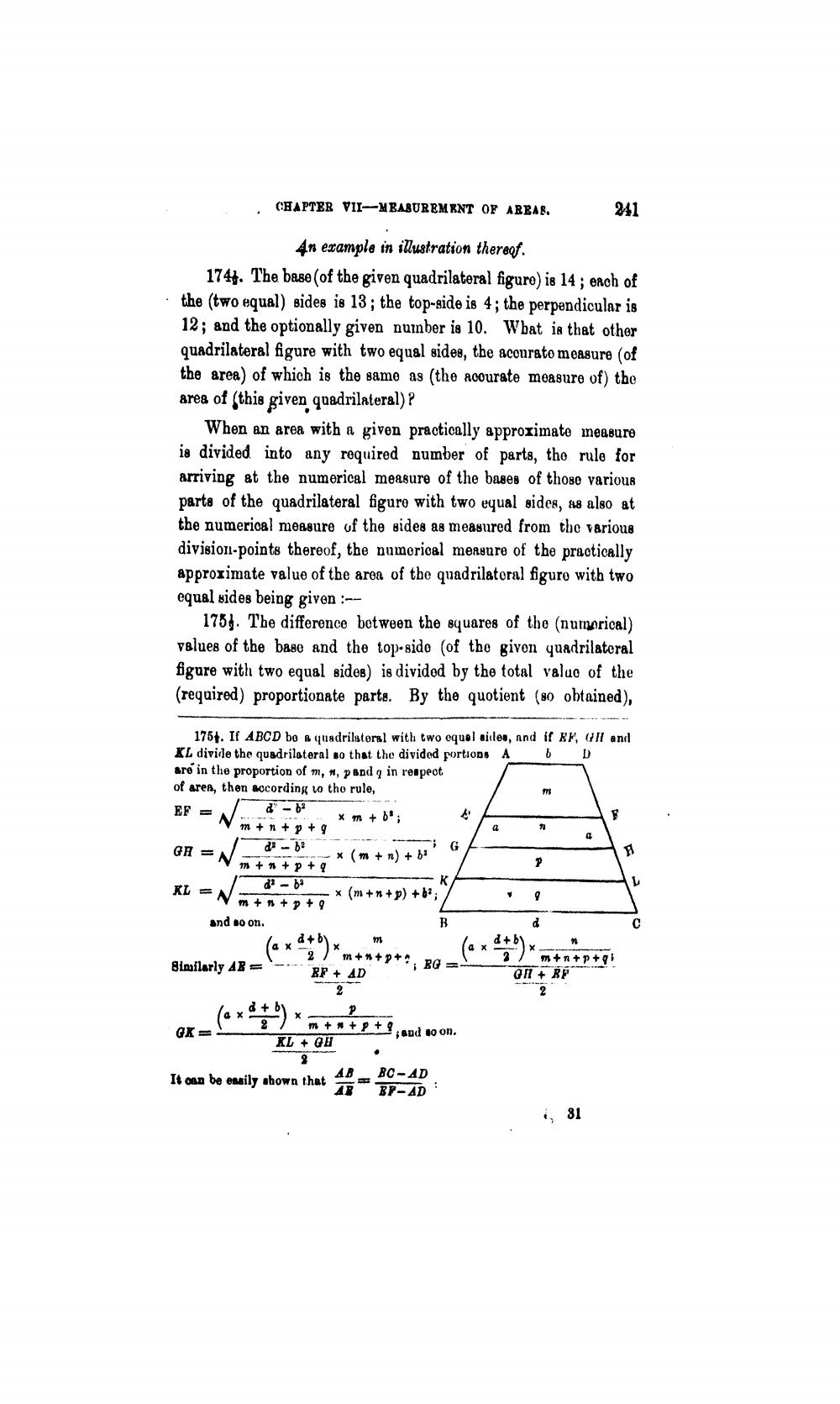________________
CHAPTER VII-MEASUREMENT OF AREAS.
4n example in illustration thereof. 1744. The base of the given quadrilateral figuro) is 14 ; each of the (two equal) sides is 13; the top-side is 4; the perpendicular is 12; and the optionally given number is 10. What is that other quadrilateral figure with two equal sides, the acourato measure (of the area of which is the same as (the acourate measure of) the area of (this given quadrilateral) ?
When an area with a given practically approximate measure is divided into any required number of parts, tho rule for arriving at the numerical measure of the bases of those various parts of the quadrilateral figure with two equal siden, as also at the numerical measure of the sides as measured from the various divisioni-points thereof, the numerical measure of the practically approximate value of the area of the quadrilateral figure with two equal sides being given :--
175). The difference between the squares of the (numerical) values of the base and the top-side (of the given quadrilateral figure with two equal sides) is divided by the total value of the (required) proportionate parts. By the quotient (80 obtained),
Nn
1767. If ABCD bo e quadrilateral with two equal aidos, and if RF, all and KL divide the quadrilateral so that the divided portions A b D are in the proportion of m, #, pand q in respect of area, then according to tho rule, EF = 2 - 0
- xm + 1; GREN di - D2 + + P + 9
K Nm + + D + 9
- * (m +n + p) +0?; and so on.
+ + + P +9
G
KL EN
Similarly AB=
+ + PRG
DA
RP + AD
1 min + P +91 ON + RP
(a***
GK=**7
*
***+p+e, and so on.
XL + GU
It can be eile shown that AB
BC-AD
81




